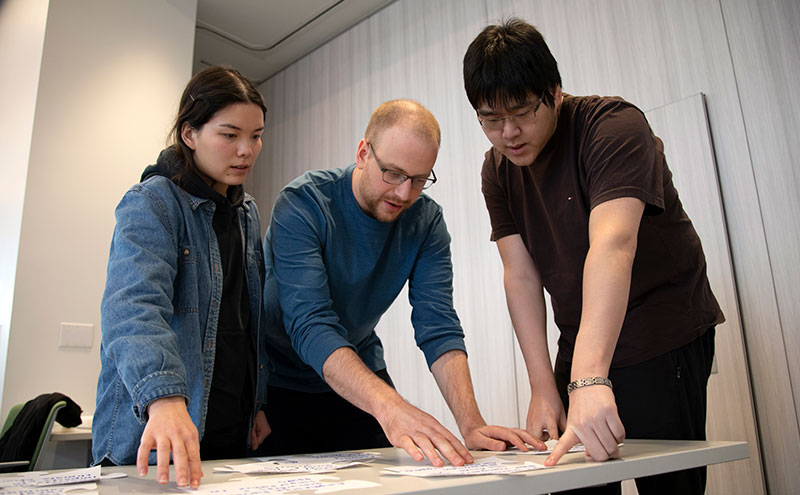What are you doing in the classroom this term that’s working? What might you be doing that isn’t really creating those meaningful learning experiences you intended? Formative feedback is a chance for us as instructors to listen to what our classrooms have to say to us. Being responsive and willing to respond to all three of those questions — and to take action accordingly — is what formative feedback is all about.
Formative versus Summative Feedback
Formative feedback is distinct from summative assessment. Summative assessment is evaluative. It takes place after the completion of an activity or assignment and focuses on learned content, often with an eye to content or other achieved outcomes.
Formative feedback by contrast is non-evaluative. It occurs while an activity or assignment is unfolding, or in process. Formative feedback can be gathered through an informal verbal check-in or through a more formal process that solicits student writing.
What are three formative feedback strategies you can implement right away?
- One of the most-used formative feedback strategies is the ‘one-minute paper.‘ This involves handing out short questionnaires with questions such as “What have you learned best so far this term?” or “What are you most unclear about this term?” The one-minute paper can be an individual response. Another version of the ‘one-minute paper’ can be completed as a group peer activity in which students sit together in groups of 2-3 to compile collaborative responses about their learning.
- Start. Continue. Another popular, more structured, tool for sparking student reflection is the “Stop. Start. Continue.” exercise. Students provide feedback on each of the three prompts: What should we stop? What should we start doing? What should we continue doing? This particular tool can offer more directed opportunities for feedback on teaching as opposed to feedback on student learning.
- Muddiest Point. “Muddiest point” is a monitoring exercise in which students are asked to highlight the most challenging or confusing part of a lesson or reading. In online teaching, tools within Zoom or other learning environments can be used for periodic classroom ‘temperature checks.’ Don’t forget that an infographic can always be a fun way to “feed back” the feedback.
Continual Adaptations and Reflections on Teaching
Collecting, interpreting, and evaluating formative feedback is a chance for us to make continual adaptations and “real time” changes to our classrooms. It can even be an opportunity to register what students have ‘missed out’ on earlier in the term so we can double back, turning those occasional teaching and learning gaps into opportunities for a fresh start. See more here about how formative feedback can positively impact an evaluation process.
Using formative feedback to listen to our classrooms demonstrates our willingness to engage in the same ways we expect students to engage every day. If we expect them to “listen” to our teaching, why shouldn’t we “listen” to the ways they are learning?
Helpful Links:
“Focus on Formative Feedback for Teaching Development,” University of Calgary.
“Tools for Formative Assessment: Muddiest Point,” University of North Texas.
“Utilising Formative Feedback in Your Teaching,” Wilfred Laurier University.
Image by Gerd Altmann from Pixabay

Recent Comments